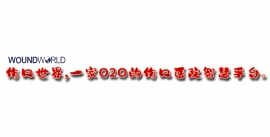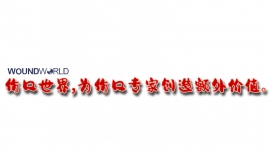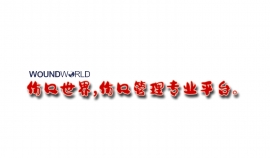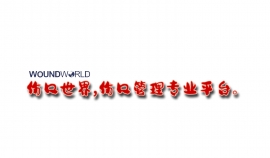文献精选
严林淯 1 ,林治 2
(1. 榆林学院,陕西 榆林 719000;2. 新余学院,江西 新余 338004)
摘 要:随着我国当前信息技术的不断发展,物联网在当前时代得到了广泛的应用,物联网在医疗领域中的应用不仅有助于从整体上提高医疗服务水平,还使医疗更加具有信息化的特征,不断地提高医疗工作的效率以及质量,因此当前在医疗领域中,物联网的应用是非常广泛的,相关研发人员应当不断地提高物联网系统的效率和质量,使物联网可以和医疗服务进行深度的融合,不断地推动我国医疗领域的持续性发展。
关键词:物联网;医疗领域;医疗信息化
中图分类号:TN929.5;TP391.44 文献标识码:A
文章编号:2096-4706(2020)01-0176-03
Application of Internet of Things in Medical Field
YAN Linyu1 ,LIN Zhi 2
(1.Yulin University,Yulin 719000,China;2.Xinyu College,Xinyu 338004,China)
Abstract:With the continuous development of information technology in China,the internet of things has been widely used in the current era. The application of the internet of things in the medical field not only helps to improve the overall medical service level,but also makes the medical treatment more information-based,and constantly improves the efficiency and quality of medical work. Therefore,the application of the internet of things in the medical field at present is very extensive. Relevant R & D personnel should constantly improve the efficiency and quality of the internet of things system,so that the internet of things can be deeply integrated with medical services,and constantly improve the sustainable development of China’s medical field.
Keywords:internet of things;medical field;medical informatization
张 娟 1 ,王东海 2 ,李 彦 3
(1. 河南省内乡县人民医院皮肤科,河南 南阳,474350;2. 河南省宝丰中医院皮肤科,河南 平顶山, 467400;3. 河南省人民医院皮肤科,河南 郑州,450000)
作者简介:张娟 , 女,主治医师,研究方向:面部毁容性皮肤病诊治、激光美容,邮箱:该Email地址已收到反垃圾邮件插件保护。要显示它您需要在浏览器中启用JavaScript。。
【摘 要】 目的 探讨光子嫩肤技术在面部色素性皮肤病治疗中的临床应用效果。方法 对 112 例面部色素性皮肤病患者实施光子嫩肤技术治疗。结果 雀斑、痤疮后色素沉着、 脂溢性角化、 黄褐斑、其他色素沉着的有效率分别为 97.37%、87.10%、61.90%、57.14%、37.50%。结论 光子嫩肤技术对面部色素性皮肤病有一定治疗效果,尤其对雀斑、痤疮后色素沉着治疗效果显著。
【关键词】 光子嫩肤技术;面部色素性皮肤病;雀斑;痤疮后色素沉着;脂溢性角化;黄褐斑
DOI:10.19593/j.issn.2095-0721.2019.06.019
Clinical application effect of photon skin tender technique in treatment of facial pigmentation skin disease ZHANG Juan 1, WANG Dong-hai 2, LI Yan3(1.Department of Dermatology, People's Hospital of Neixiang County, Henan Province, 474350, China; 2. Department of Dermatology, Baofeng Hospital of Traditional Chinese Medicine, Henan Province, 467400, China; 3. Department of Dermatology, Henan People's Hospital, Henan Province, 450000, China)
[ABSTRACT] Objective To explore the clinical application of photorejuvenation in the treatment of facial pigmented skin diseases.Methods 112 patients with facial pigmented skin disease were treated with photorejuvenation. Results The effective rates of freckles, post-acne hyperpigmentation, seborrheic keratosis, chloasma and other pigmentation were 97.37%, 87.10%, 61.90%, 57.14%, 37.50%, and freckles and post-acne pigmentation efficiency. Conclusion Photon rejuvenation technology has certain therapeutic effects on facial pigmented skin diseases, especially for freckles and post-acne pigmentation .
[KEY WORDS] Photorejuvenation technology; facial pigmented skin disease; freckles; pigmentation after acne; seborrheic keratosis; chloasma
王玉俗1,褚文辉2,李久波3,赵全民1N,李春义4※
(1.吉林农业大学中药材学院,吉林长春130118;2.台州学院生命科学学院,浙江台州317000;3.长春市农业机械研究院, 吉林长春130000;4.中国农业科学院特产研究所特种经济动物分子生物学国家重点实验室,吉林长春130112)
收稿日期:2019—10—19
基金项目:中国科学院A类战略性先导专项(XDAl6030305)
作者简介:王玉俗(1994一),男,贵州省遵义市人,在读硕士研究生,从事特种经济动物干细胞及相关研究。
※通讯作者:李春义,男,教授,博士生导师,从事鹿茸生物学研究:赵全民,男,副教授,硕士生导师,从事经济动物疫病研究。
摘要:鹿茸软骨中富含血管,不但能修复缺陷还能实现再生,是研究软骨缺损修复的良好天然模型。由于鹿茸干细胞所分化的软骨分布着丰富的血管网络,所以其ECM中可能含有大量促进软骨生成的细胞因子和功能蛋白。本文就软骨缺陷修复进行综述,对使用鹿茸干细胞ECM修复软骨缺陷的初步结果进行总结,并提出展望。
关键词:软骨修复;ECM;干细胞;鹿茸 中图分类号:Q786 文献标识码:A 文章编号:1001-4721(2020)01.0064.05
Research Progress of Stem Cell Extracellular Matrix in Repairing Carti--lage Defects and Antler Stem Cell Extracellular Matrix
WANG Yu·SUl,CHU Wen-hui2,LI Jiu·b03,ZHAO Quan-minl※,LI Chun-yi4※
(1.College of Traditional Chinese Medicine,Jilin Agricultural University,Changchun 130118,China;2.Academy of Life Sciences,Taizhou University,Taizhou 317000China;3.Changchun Agricultural Machinery Research Institute,Changchun 130000,China;4.StateKey Laboratory for Molecular Biology of Special Economic Animals,Institute of Special Wild Economic Animals and Plants,Chinese Academy of Agricultural Sciences,Changchun 130112,China)
Abstract:Antler cartilage is rich in blood vessels,which can not only promote defect repair, but also regenerate itself, thus antler is a good animal model to use for the study of cartilage defect repair.Because the cartilage differentiated from antler stem cells is rich in vascular net—works,its extracellular matrix(ECM)contains a 1arge number of cytokines and functional proteins that can promote cartilage for mation.In this paper, the currentstatus of repairing cartilage defects was reviewed,and the preliminary results of using antler stem cell ECM to repair cartilage defects were summarized,and the prospects were put forward.
Key words:cartilage repair.ECM:stem cell:antler
Author: Corey Heerschap
Corey Heerschap is Wound/ Ostomy Clinical Nurse Specialist at Royal Victoria Regional Health Centre in Barrie, ON, Canada, and a PhD student at Queens University in Kingston, ON, Canada. He is the President-Elect of Nurses Specialized in Wound, Ostomy and Continence Canada, Inaugural Panel Member of the Canadian Pressure Injury Advisory Panel, and Education CoLead for the Commonwealth Wound Care Resource Alliance.
Artificial intelligence is rapidly changing the healthcare landscape. Advancing technologies such as large language models are providing new tools for educating clinicians, students, and individuals living with wounds. Wound care clinicians should be aware of the benefits of this new technology, how it is impacting, and could impact, wound care education, and current limitations to the technology and tools available. This article outlines broadly the current state of AI in healthcare and discusses the implications of this technology on wound care education as well as its current limitations.
Corey Heerschap is Wound/Ostomy Clinical Nurse Specialist at Royal Victoria Regional Health Centre in Barrie, ON, Canada, and a PhD student at Queens University in Kingston, ON, Canada. He is the President-Elect of Nurses Specialized in Wound, Ostomy and Continence Canada, Inaugural Panel Member of the Canadian Pressure Injury Advisory Panel, and Education CoLead for the Commonwealth Wound Care Resource Alliance.




